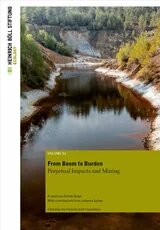Worldwide the economies are rapidly increasing the demand for minerals. Although some policies are focusing more on recycling, many others are aiming to open new mining projects. Since the Russian full-scale invation into Ukraine, the race for raw materials has intensified. In this rush for coveted minerals and metals such as copper, gold, bauxite, lithium and others the long-term consequences of this extreme intervention in landscapes and ecosystems are often lost from focus.
This report strives to shed light on the various biophysical as well as sociocultural long-term impacts of mining, which can mean massive long-term monetary costs for states and further generations.
Product details
Table of contents
Preface
Executive Summary
Abbreviations
Glossary
Introduction
- An urgent matter: Why now?
- Current discussions in Europe
Perpetual Impacts: A Conceptual Approach
- Environmental impacts
- Why perpetual?
- Essential characteristics
- Secondary characteristics
- What it means for the mining sector
- The atrophy of vigilance as an ethical dilemma
- Perpetual impacts at different spatial scales
Case studies: Pratical examples of long-term and perpetual impacts
- Nuclear waste management planning: Caring for the distant future
- Risk communication as an integral part of risk management
- Berkeley Pit (Montana, US)
- Other cases
Governance and Management
Conclusions
Recommendations
References
